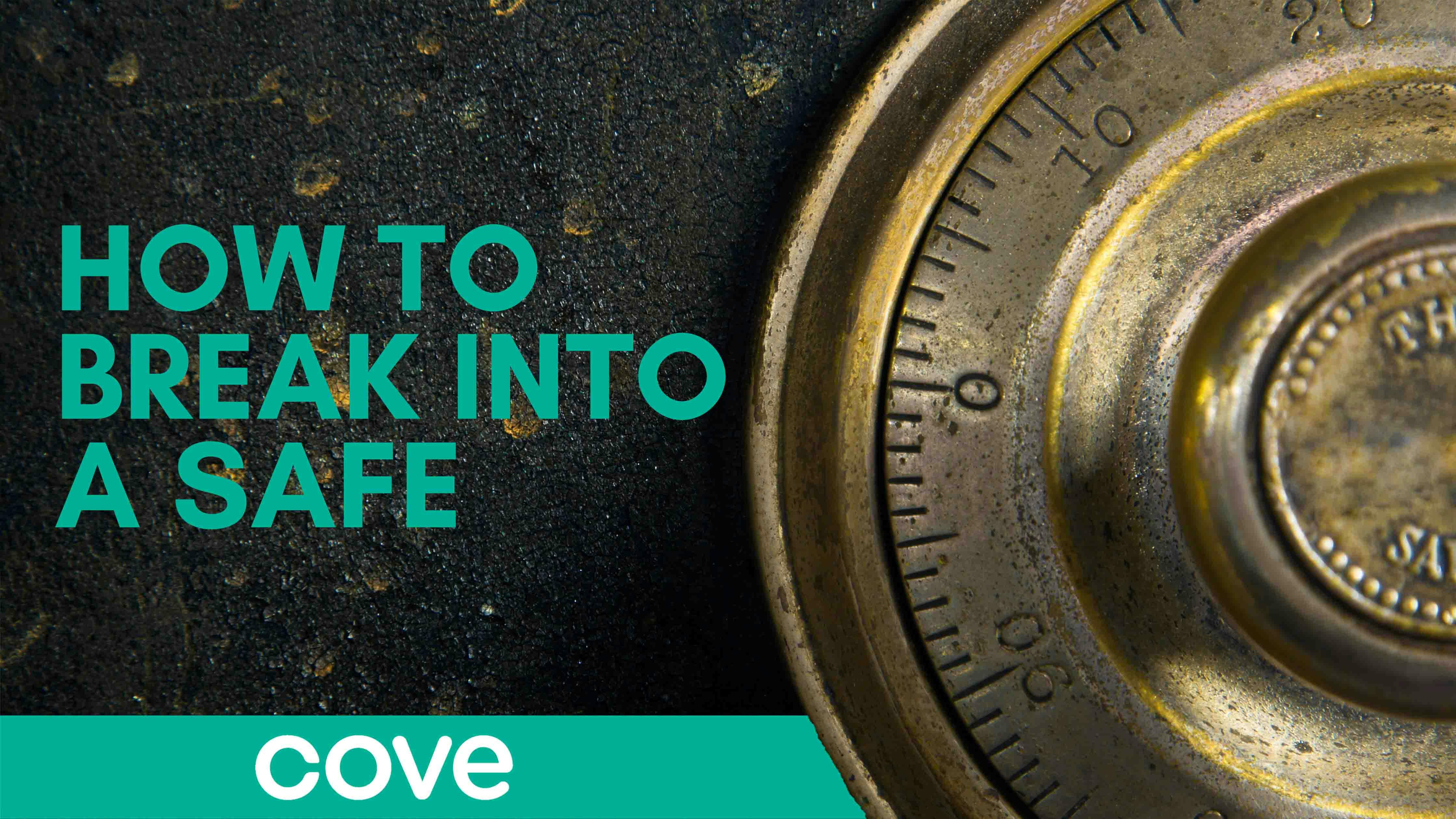
Safes can be used to protect jewelry, cash, guns, and other valuables. However, if you own a safe, you’ve probably asked yourself if it’s possible for a burglar to break into the safe and steal your valuable items. Well, the good news is that it’s not very easy to break into a safe, especially for an inexperienced burglar. Most burglars will try to remove the safe from the location, rather than try to break into the safe while still in the house. If the safe is heavy and bolted to the ground, what will a burglar do next? Here’s exactly how a burglar will break into a safe (if possible).
Types of Security Safes
First of all, there are several types of safes that homeowners will use in the home. Each safe has specific drawbacks and benefits that might make a homeowner prefer one safe over the other.
Combination Safe
The first type of safe is the combination safe. This safe is one of the most common types of safes. It has a dial on the front usually with the numbers zero through one-hundred. To open the safe, the owner will need a three-number code that corresponds with the numbers of the dial. When the dial has been turned to the three numbers of the combination, the lock will release, and the door will pop open. This type of lock is similar to the locks used to secure school lockers—though the metal on the safe is much thicker and more secure.
Combination safes are the least expensive and don’t require any additional parts (like batteries or wires). The safe is simple, with nothing extra. For homeowners looking to store something in a secure location, but don’t care for the additional security devices that smart safes offer, the combination safe in the perfect option. These come in all sizes, from small lockboxes to large gun safes.
However, combination safes take the longest to access, even if you’re well-equipped with the combination for the safe. It is easy to mess up the combination or spin the dial passed a number. For homeowners looking for a safe that they can access quickly, this might not be the best option.
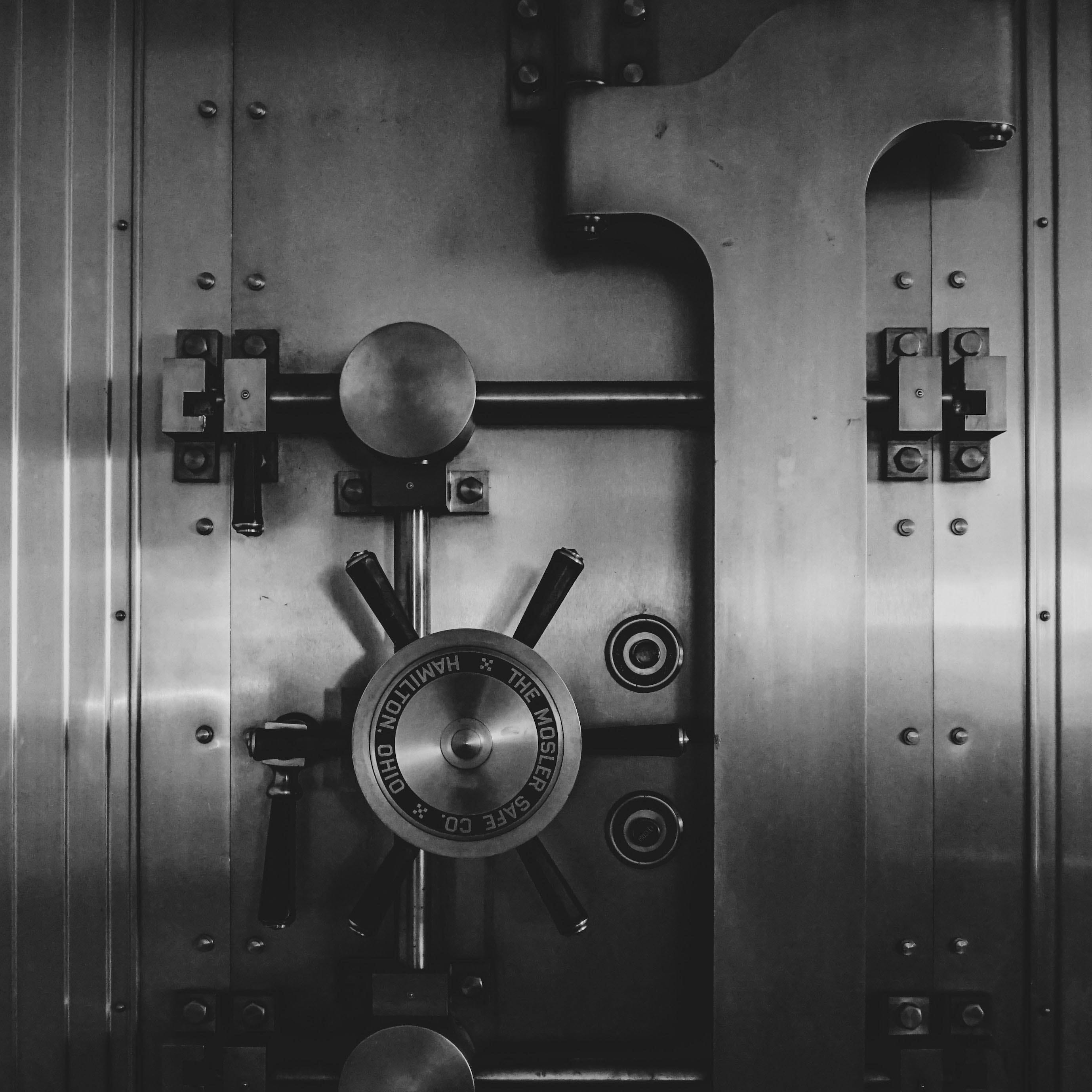
Digital Lock Safe
A digital lock safe is one step above the combination safe, in terms of technology. This type of safe comes with a digital number pad. The number pad is similar to the lock screen on a smartphone. The owner of the safe can pick a multi-number combination and secure the safe. The code that the safe owner chooses can be reset and reconfigured at any time. To reset the code, the owner of the safe will need to use the reset admin privilege number, followed by the old digital code. Then, the new code can be added to the safe. Since it’s fairly easy for the owner of the safe to reset the code, the safe’s password can be continuously changing, increasing the security of the safe.
Digital safes are more expensive than combination lock safes and are more common among businessmen and professionals. These safes carry an additional layer of protection since they have a “lockout penalty.” A lockout penalty is when the wrong password has been entered too many times (typically more than three wrong entries), and the safe shuts down for a period of time before a new password can be entered. Once the lockout penalty is over, the correct password must be entered. If another wrong password is entered, the lockout penalty will be enforced against, this time for longer.
Some digital safes also come with a key. The key can be used to open the safe quickly and easily, without having to remember the code. However, many people misplace the key, or they place it on top of the safe. Instead, you should hide the key in a place where you will remember it. However, do not leave the key in plain sight.
Since the locks rely on electronics, there is a small portion of digital locks that will fail. About 3 percent of safes fail. This means that three out of one-hundred locks will fail in a ten year period. However, for those looking for a completely secure safe, you may be out of luck. All safes have a small percentage that will fail over time or in the right conditions. If you need to have a safe in your home, buy a safe that is guaranteed to be secure. In short, don’t skimp on the price.
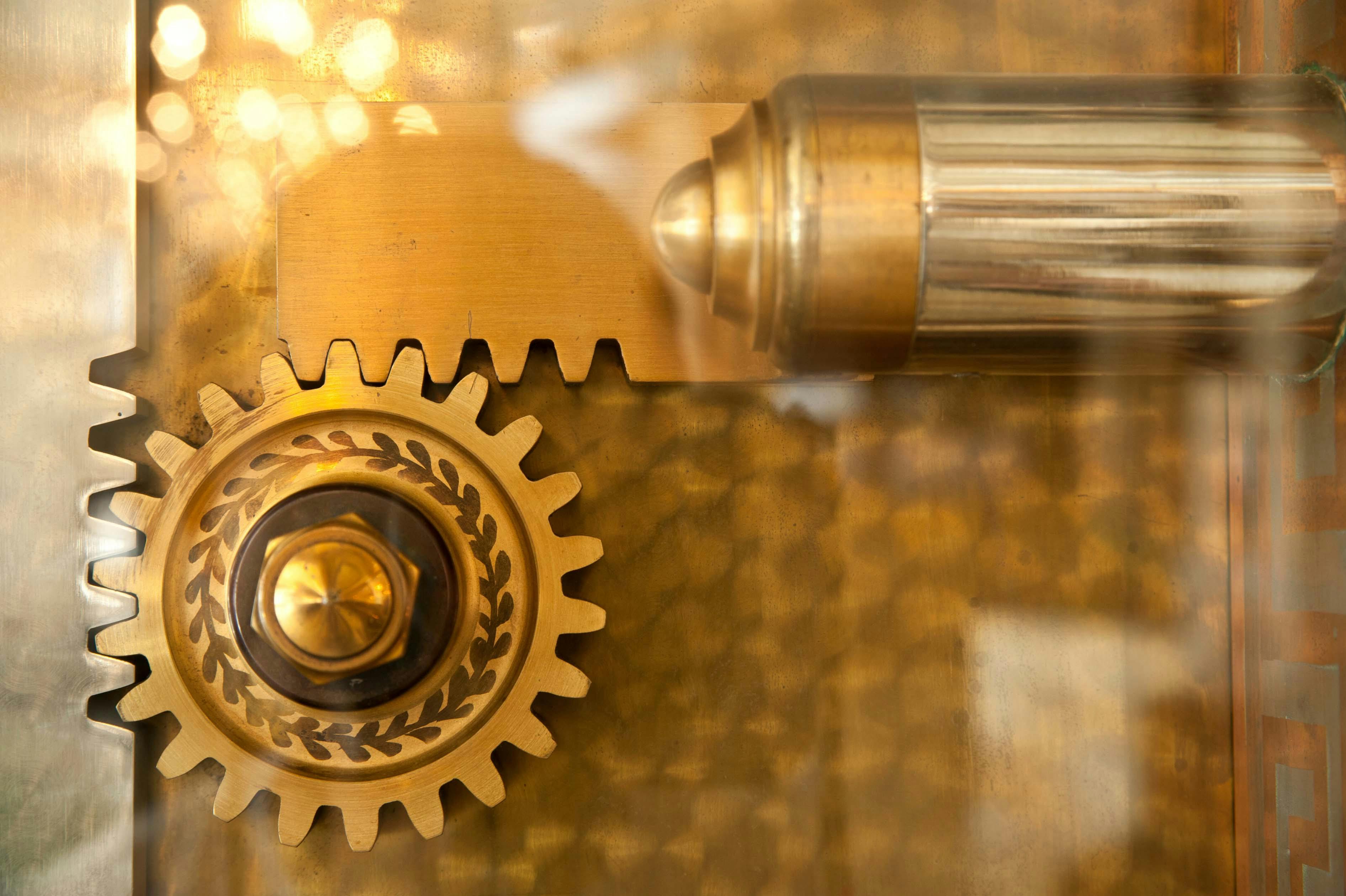
Biometric Safe
The final type of safe is the biometric safe. The biometric safe is the most advanced safe with the newest technology. “Biometrics” means that it uses facial recognition, fingerprint data, retinal scan, voice recognition, or other physical features to open the lock. Most biometric safes will use fingerprints to open the safe. To open the safe, the safe owner will need to configure his or her fingerprints to the safe. This should only take a few minutes (similar to an iPhone fingerprint lock screen). After the fingerprints have been put into the system, you won’t need a code or combination to enter the safe, only your fingerprints.
Biometric safes are the fastest safes to access since owners won’t need to remember a combination. These safes can remember up to 100 different fingerprints. This allows the safes to be more secure and give a wide number of people personal access to the safe. Additionally, since there is no passcode or combination, only the people with the right fingerprints will have access to the inside of the safe.
Biometric safes are not as time-consuming as combination safes or digital safes. Owners can access their valuable items quickly and securely. Although they are the most secure safe, they are also the most expensive. Biometric safes can cost up to $7,000 depending on the branding and size of the safe.
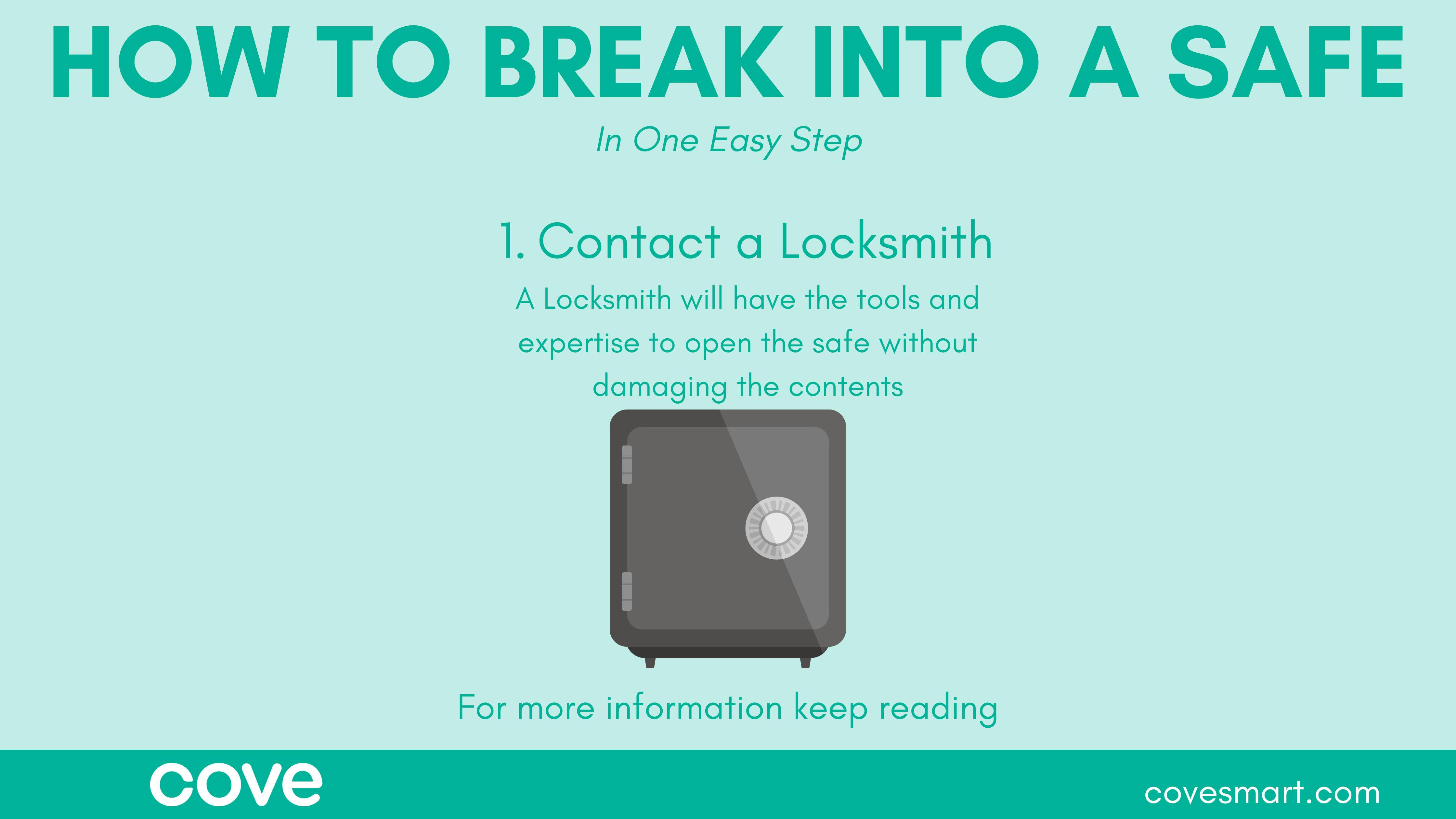
How to Break Into a Combination Safe
Combination safes are the easiest safe to break into for an experienced safe cracking burglar. However, that being said, it still takes a long time to crack the combination. Opening a combination safe without destroying the safe takes time, practice, and expertise. The first thing that a burglar will do before breaking into a combination safe is to assess the safe and see if they can remove the safe. Safes can be a dangerous thing to keep in the home since the presence of the safe indicates that there is something worth stealing. If a burglar finds a safe in the home, it’s likely that the safe will become the number one target. If a burglar is able to remove the safe from the location, they will try to remove the safe from the house.
While targeting a home, burglars try to get inside the house and back out as quickly as possible, even if they know that no one is home. Staying in the house increases the chances that a neighbor will see the burglar through a window and call the police. Because it’s risky to stay in the home for a long period of time, burglars will try to steal the safe first, predicting that the safe will hold enough valuables to make the break-in worth it.
However, some safes may be attached to the floor of the house. Safes that are bolted to the floor will be impossible to move without destroying the safe. If the burglar is experienced in breaking into safes, they will try to break into the safe on the spot.
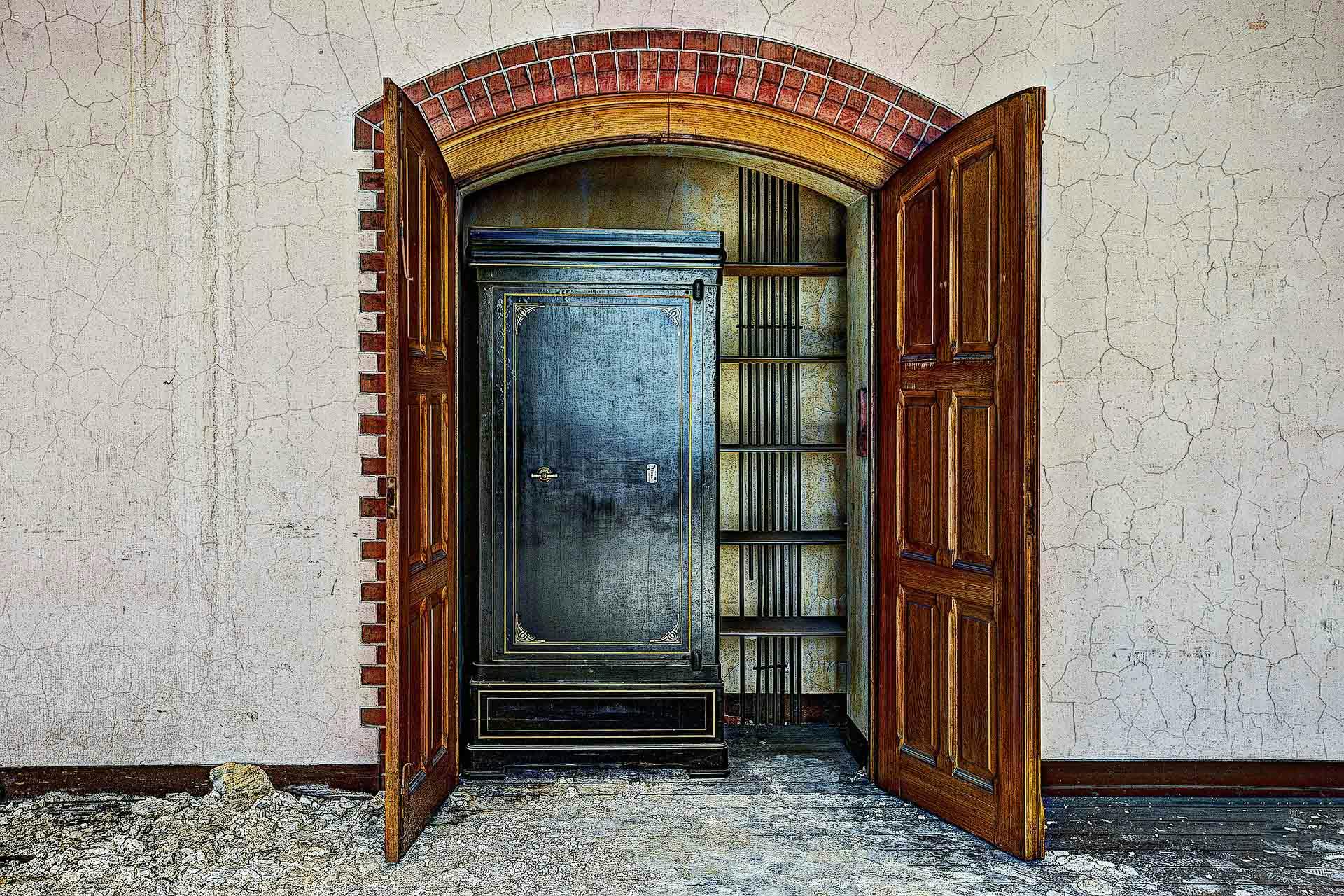
Typically, for a combination lock, the burglar will slowly rotate the dial and press his or her ear against the safe. Without the right tools, this will be a slow and difficult process. However, if the safe is inexpensive, a burglar should be able to crack the code with this method. With his or her ear against the metal of the door, the burglar will turn the dial right until they hear a faint click. The click means that the first number of the combination was hit, and the first lock was unlocked. The burglar will look up, memorize the number that has made the click, and press his or her ear against the safe again.
Now, the burglar will turn the dial in the other direction (left) and wait for the same click. If the dial makes a full rotation without clicking, the burglar knows that he or she missed the second number, and they will need to restart. When the burglar finds the second number that clicks, the burglar will turn the dial right again and look for a third. The burglar will continue this process until the door clicks open.
To avoid having your combination safes broken into, it’s important that you avoid using cheap safes. Cheap safes have thin walls, allowing burglars to better hear which numbers are a part of the code. To see if your safe is burglar-proof, press your ear to the wall of the safe (right next to the dial) and see if you can hear when the locks unlock.
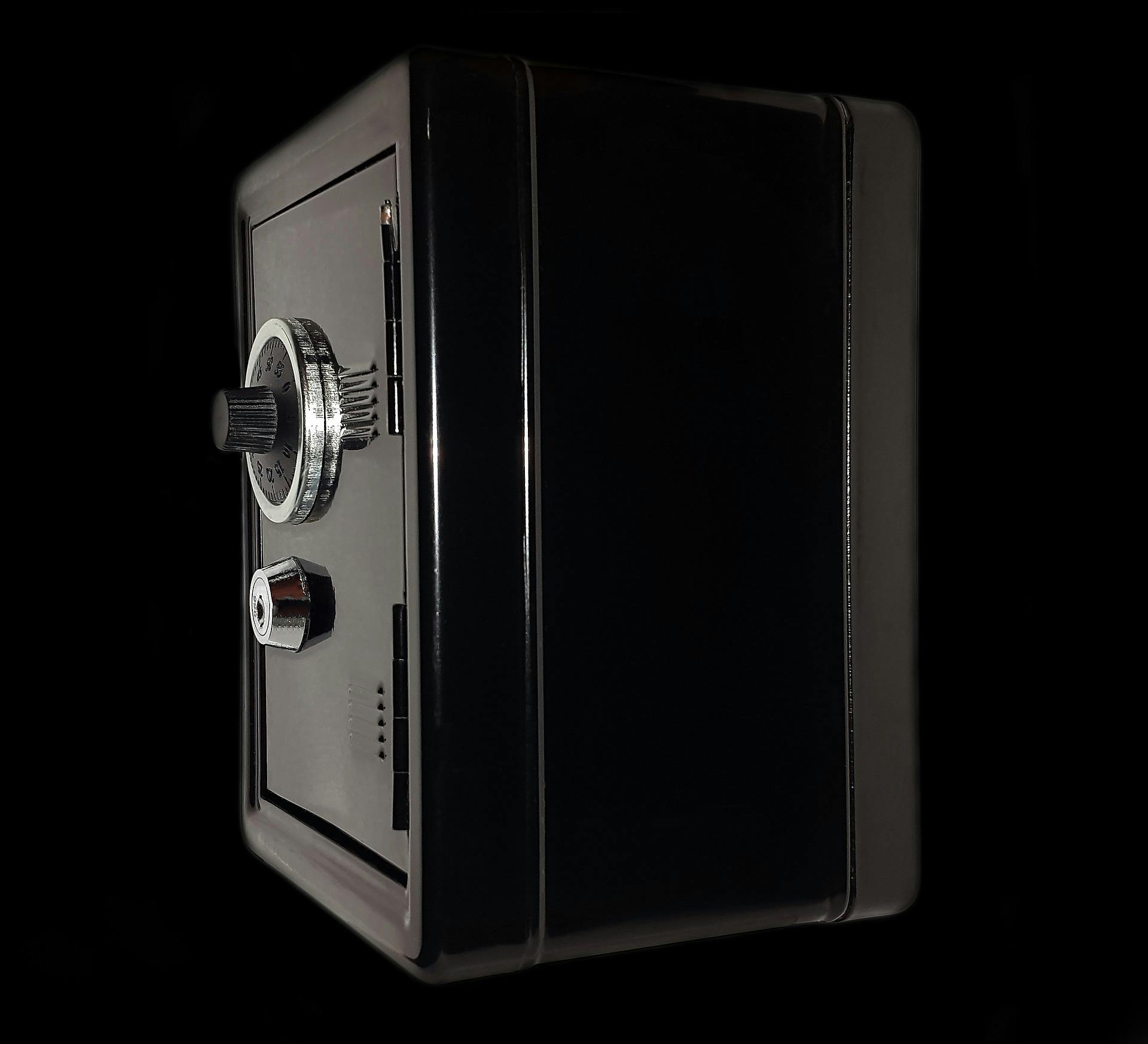
How to Break Into a Digital Lock Safe
A digital lock safe uses a keypad instead of a dial. This type of safe is harder to crack, especially by a burglar without safe cracking tools. However, if your safe has a reset key, the burglar’s job becomes a whole lot easier.
A reset button is a small hole in the back of some electronic safes. Typically, cheap safes come with electronic reset buttons. Although this might be a helpful tool to have if you constantly forget your keycode, it is also a weakness in the safe. If a burglar knows about the reset button, the burglar can insert a paperclip into the small hole and reset the safe. Once the safe is reset, he or she can enter a new code and open the safe.
Not all digital safes can be unlocked through a reset button. If your digital safe can’t be unlocked using a reset button, then the burglar will have to resort to brute force to open the safe. If the safe is made from thick steel, the burglar won’t be able to crack open the safe.
How to Break Into a Biometric Safe
Biometric safes are the most secure type of safe. They are considered “high security” safes and demand a steep price. However, due to their quality, it is incredibly difficult to break into a biometric safe.
Thieves might try to use a piece of tape on the fingerprint scanner, hoping to use the fingerprint oil that was left behind from the last user. However, if the owner of the safe wipes the fingerprint pad every time it is used, there is no way for this technique to work. Essentially, there is no way to break into a biometric safe without dismembering the safe.
If you are locked out of your biometric safe, and you are trying to find a way back in, the best thing to do is to take the safe to a local locksmith.
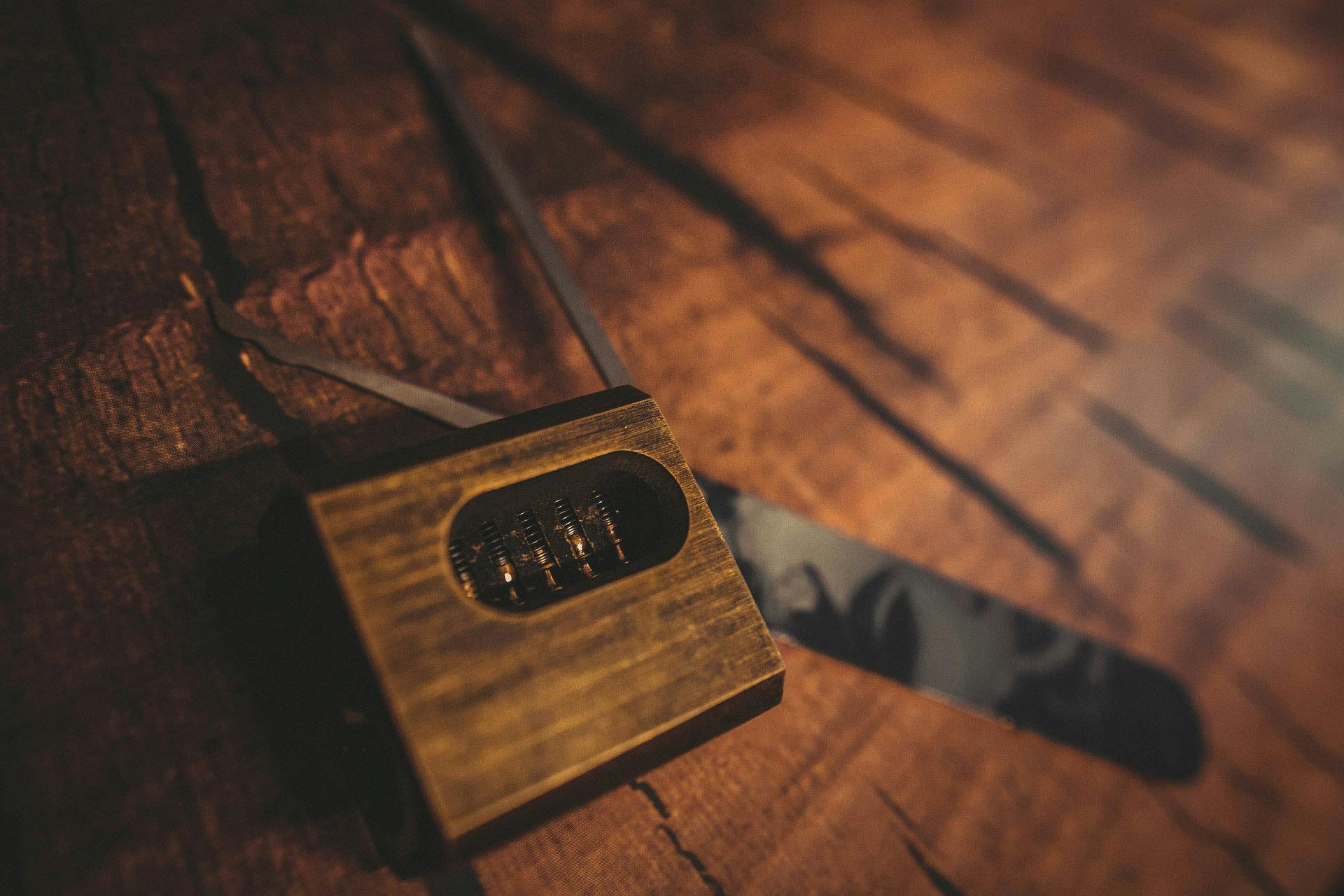
Other Ways to Break Open a Safe
If you have lost your combination or the safe has malfunctioned and won’t let you access the contents, your best option is to head to a locksmith. A locksmith will know how to access the safe without destroying the container or the contents. To use a professional locksmith, you will need to have your safe serial number. The serial number will allow the locksmith to research the safe and learn more about the type of locking mechanism.
A locksmith will first try to enter the combination that you suggest. This will help the locksmith decide whether the locked safe is broken or whether the code is incorrect. If the safe is broken (the dial may have become loose, or the electronic lock may have stopped working), the only way to access the contents is with brute force. If this is the case, there are two ways that the locksmith can gain access to the safe: cutting or scoping.
The first option is to cut the safe. This is a less preferred option because it destroys the safe. Essentially, the locksmith will cut through the metal of the safe using a high power metal saw and then use a pry bar to pull the walls of the safe apart. The issue with this method is that the safe is often beyond repair by the time the contents are freed. This method is also dangerous if the safe is a gun safe. A gun safe will usually hold anywhere from two to forty guns, making it dangerous to cut into the walls and destroy the guns inside.
The second option is to use a scope. With a scope, a locksmith will drill a small hole into the side of the safe. Then, through the hole, the locksmith will insert a small scope. With the scope, the locksmith will be able to see how the lock works, from the inside. The locksmith will then be able to deactivate the lock from the inside. Typically, this works for all safe types, including electronic safes.
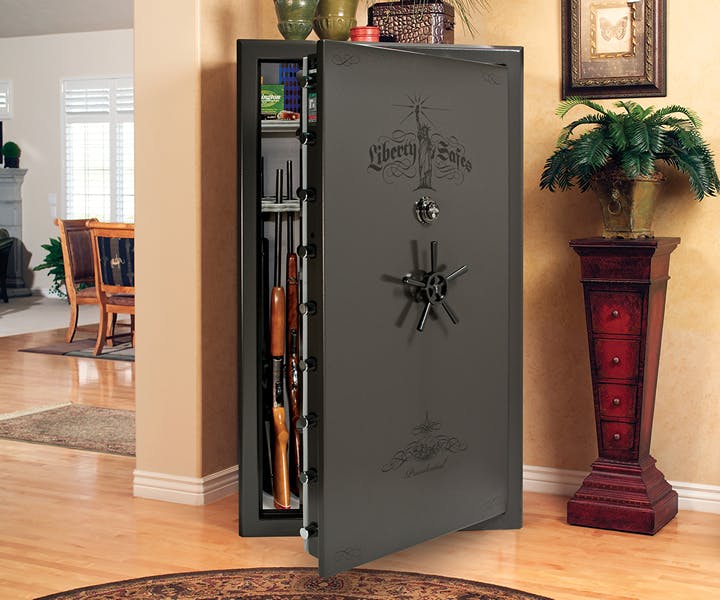
Where Should You Use a Safe?
Safes are one of the most secure ways to protect your belongings. However, they can also put a target on your items since the presence of a safe indicates that there is something worth stealing. Because of this, not everyone should use a safe to store their items. Instead of using a safe, consider storing your items in bank vaults. For the average person, bank vaults will be the best option to store valuables. However, if, for any reason, you don’t trust the bank with your items and you would prefer to take the risk in order to keep a better eye on the items, use a safe from an accredited company.
Here are some situations where a safe is the best option to store your items: Gun Storage. Many American homeowners chose to keep guns (either for hunting or self-defense) in their homes. However, guns can be incredibly dangerous if they are left in an accessible location. Because of this, gun safes are the best place to store guns in the home. Gun safes not only protect others from using guns poorly, but they also protect the firearms and keep the guns in their best condition. Protect Important Documents. Some safes, called fire safes, are meant to protect valuable documents from fire, water, or other damaging forces. The safe is a small, box-like safe that is large enough to fit several books and files that are important. Fire safes are fireproof, waterproof, and are more secure than the average safe. Commercial Documents. Many businesses have a safe of some kind to protect important files and documents from being stolen. In this case, a safe is the best option to protect the documents. The safe can only be accessed by a select group of people, making it the most secure option.
Are Safes Safe?
Safes are incredibly secure. If you buy the right kind of safe, you will be able to fully and completely protect your valuables. However, since not all safes are made equal, it’s important to know what you need in order to buy the right safe.
Some features that make safes safe are:
1. Steel Walls
Most safes are made with thick stainless steel walls that are inches thick. This means that it is nearly impossible to break the walls of the safe without damaging whatever is inside the safe. Steel thickness is measured according to gauges. The gauge used to measure steel is from 1 to 20 (1 being the thickest). A steel gauge level three is 0.2391 inches thick while a steel gauge level 16 is 0.0897 inches thick. Try to find a safe that is at least gauge 12 (0.1046 inches thick) or higher.
2. Fireproof
Some safes are fireproof, making them extremely hard to break into. This ensures that even using a propane torch, the burglar will still have trouble breaking into the safe. Liberty Safe offers gun safes that are fireproof for up to 180 minutes, making their safes some of the most secure safes on the market.
3. Waterproof
Having a safe that is waterproof is important because the items inside the safe are better protected. Flooding happens every year and affects millions of people. From seasonal hurricanes that hit Florida, Lousiana, and Texas, to river flooding in Mississippi, floods are a common part of life for some people. If you want to protect the valuables in your safe, getting a safe that is waterproof is highly recommended, especially if you’re living in a flood-prone state.

4. Double-Locked
Some safes have double locks to make it nearly impossible for a burglar to pry open the safe. Both locks connect to the dial (or keypad or biometric sensor). When the first lock opens, the second lock follows. However, this adds beneficial security because it makes it impossible to open the safe without the code. The second lock acts as a security measure to prevent safecracking.
5. Burglary Protection
Burglar-proof safes are specifically designed to prevent burglary. They prevent forced entry and often include penalties for incorrect passwords. Burglar-proof safes are protected against forced entry in the form of power tools, chemicals, explosives, safe drilling tools, cutting tools, or fire torches. A burglar-proof safe will prevent burglars from removing the safe from the house and then severely delay the burglar from being able to open the safe.
Safes are safe. They can protect your valuable belongings from burglaries, fires, floods, and more. By placing your items in a safe, you guarantee that those items will remain secure and untouched until you open the safe again. However, the protection that your safe offers is only as good as the safe itself. When looking for a safe to secure your valuables, only consider safes from verified safe companies. And for added security consider a home security system.
